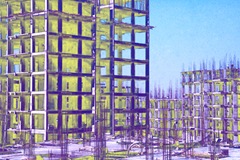Over the next two days I will be attending this conference at the Architectural League in New York City. 
It’s been a while since an architectural-themed conference on India has taken place here in NYC and it should be interesting to see the dialogue that it generates.
Hosted at the New School auditorium, the conference sold out a few days ago. Nevertheless there are tickets available for the keynote address at the end of Day 01.
Himanshu Burte, Prem Chandavarkar, Kenneth Frampton, Soumitro Ghosh and Nisha Mathew, Sudhir Jambhekar, Rajeev Kathpalia, Anupama Kundoo, Reinhold Martin, Gurjit Singh Matharoo, Anuradha Mathur and Dilip da Cunha, Rahul Mehrotra, Geeta Mehta, Vyjayanthi Rao, Samira Rathod, Margie Ruddick and Tom Zook, Michael Sorkin, Neerja Tiku, and Billie Tsien and Tod Williams
The conference looks to understand the growth and development of Indian architecture and cities overall in the time frame of an overall growth in Indian economy, and its standing in the global scenario.
However the choice of participants seems to be a bit peculiar. There are the usual high profile “suspects” and then others that are probably there because the US-based co-chairs had heard about them. And somehow my feeling is that it does not reflect the ground realities.
As much as he is reviled in the architectural community in India, I would have loved to see Hafeez Contractor present and talk about the conference. As my friend and landscape architect Runit Chhaya of Design Cell NYC puts it “Hafeez is today, probably the only architect in India who gets buildings sold, just on his name and fame “.
I will be covering the conference in detail. If you are going to be attending, give me a shout in the comments section.
